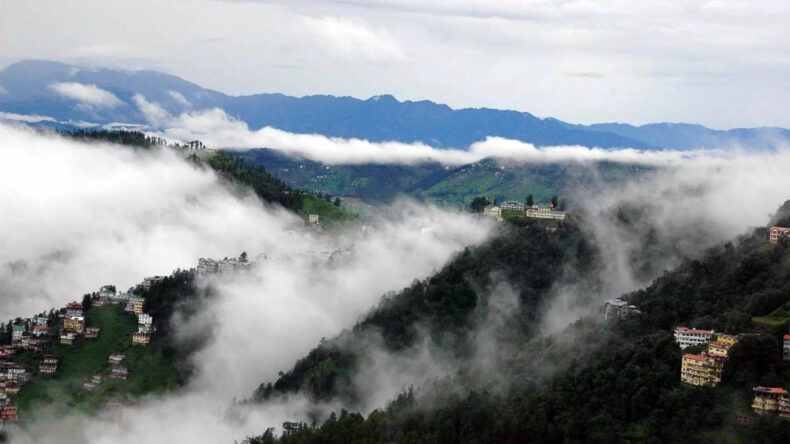Himachal Pradesh’s beautiful surroundings, blessed by nature with attractive rivers, snow-clad mountains, and verdant forests, have recently been tarnished by a tragic disaster. The aftermath of torrential rains, flash floods, and landslides severely damaged the region.

Since the start of the monsoon season this year, the state has recorded 367 fatalities due to rain-related events. 12,000 dwellings have been damaged, 506 roads have been closed, and 149 water supply networks have been disrupted. The state has been designated as a “natural calamity-affected area,” highlighting the importance of long-term mountain development.
Himachal Pradesh’s situation is the result of several causes, including the gloomy effects of climate change and global warming, questionable development plans, and the unrelenting pressures of tourism. According to the Intergovernmental Panel on Climate Change (IPCC), global warming is expected to have a significant impact on the Himalayan region, with potentially “severe consequences” for mountain people in Himachal and Uttarakhand. Already, these areas are experiencing an increase in flash floods and landslides, and their ecosystems are showing little resilience.
Himachal Pradesh has mostly followed the Dr. Parmar development paradigm since its statehood in 1971. This strategy prioritized social welfare, human resource development, and land reforms, leading to tremendous growth and development.. However, the forces of globalization and liberalization compelled Himachal to exploit its own natural resources, leading to lasting environmental impacts.
Another worrying element that has emerged in the aftermath of the Himachal floods is the rampant and unplanned development of buildings throughout the state. Unsettling videos of multi-story structures collapse in Anni, Kullu district, sparked concern. There are no height limitations in these regions since they are administered by panchayats and are not subject to the Town and Country Planning (TCP) Act. This condition has put enormous strain on the earth, resulting in land subsidence during heavy rains.
Himachal Pradesh has seen a tremendous proliferation of hydroelectric projects in its drive of development. While these initiatives have made major contributions to the state’s progress, their influence in the current floods has raised concerns among politicians.The increased number of hydropower projects has resulted in the construction of “run of the river” dams, which redirect water flow through mountain tunnels and deposit debris along riverbeds. This fallen stuff becomes a destructive force during cloudbursts or strong rains. Furthermore, certain construction approaches employ vertical mountain cutting rather than terraced cutting, worsening environmental difficulties during rainfall.
The solution to these numerous difficulties is to rethink Himachal Pradesh’s development approach. The latest disaster has highlighted the importance of prioritising “mountain specificities” in the state’s development strategy. Development planning must be based on an awareness of what distinguishes mountain regions, taking into account both their opportunities and restrictions.
The key to informed and effective development in Himachal is to localise the Sustainable Development Goals (SDGs) in the form of Sustainable Mountain Development (SMD). Agenda 21, adopted at the 1992 United Nations Conference on Environment and Development (UNCED) in Rio de Janeiro, inspired the notion of SMD. SMD has since been effectively implemented in several European mountain regions, assuring long-term growth for both the mountains and the towns that rely on them.
SMD recognises the critical role that mountain ecosystems play in providing crucial natural resources, particularly water, to a large section of the population. It also emphasises the importance of mountain settings as the homes of local and indigenous cultures. As mountain regions face rapid transformations, SMD calls for collaborative efforts involving all stakeholders, including local communities, to formulate comprehensive and holistic approaches to development.
The Sustainable Mountain Development Summit-XI, which will be held in Leh in October 2022, is a step in the right direction because it will bring together many stakeholders to discuss and address the particular difficulties that mountain regions face.
Finally, the latest disaster in Himachal Pradesh serves as a sober reminder of the critical need for long-term mountain development. Because of the state’s unique terrain, a development strategy that respects its unique traits and prioritizes the well-being of both its people and its environment is required. A promising way forward is to localise the Sustainable Development Goals through Sustainable Mountain Development. We owe it to future generations as stewards of our majestic mountains to conserve and maintain this pristine environment.













